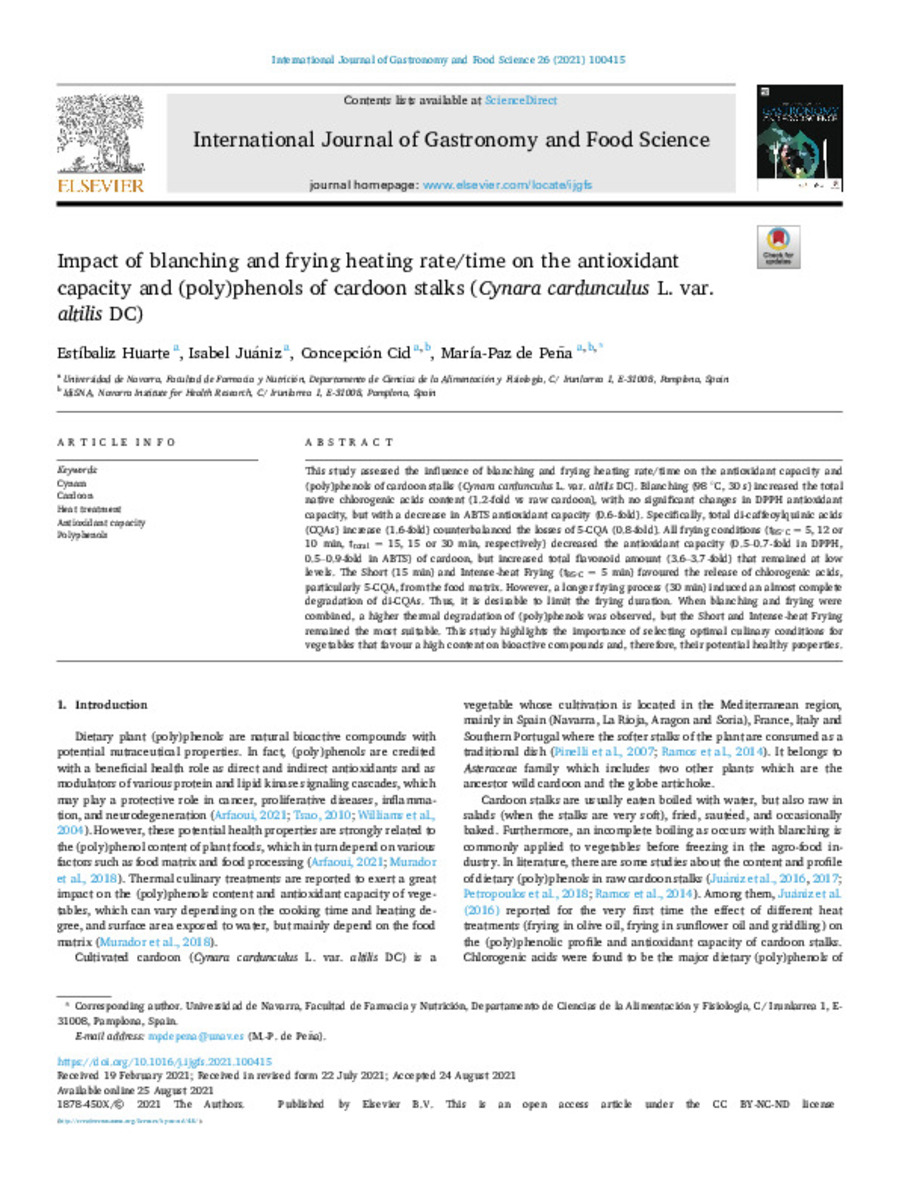Impact of blanching and frying heating rate/time on the antioxidant capacity and (poly)phenols of cardoon stalks (cynara cardunculus L. var. altilis DC)
Keywords:
Cynara
Cardoon
Heat treatment
Antioxidant capacity
Polyphenols
Note:
This is an open access article under the CC BY-NC-ND license
Citation:
Huarte, E. (Estibaliz); Juaniz, I. (Isabel); Cid, C. (Concepción); et al. "Impact of blanching and frying heating rate/time on the antioxidant capacity and (poly)phenols of cardoon stalks (cynara cardunculus L. var. altilis DC)". International Journal of Gastronomy and Food Science. 26 (100415), 2021,
Statistics and impact
0 citas en

0 citas en

Items in Dadun are protected by copyright, with all rights reserved, unless otherwise indicated.







